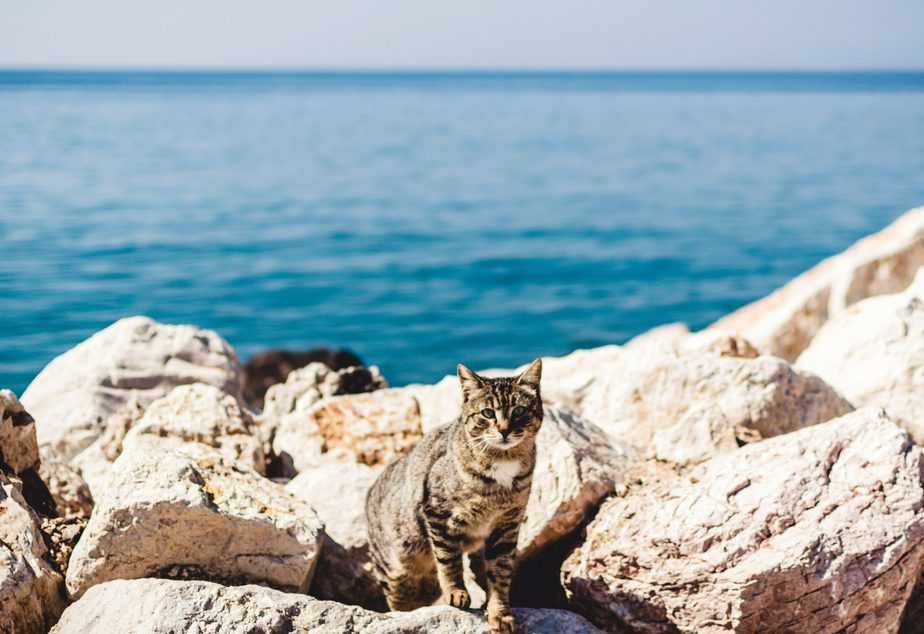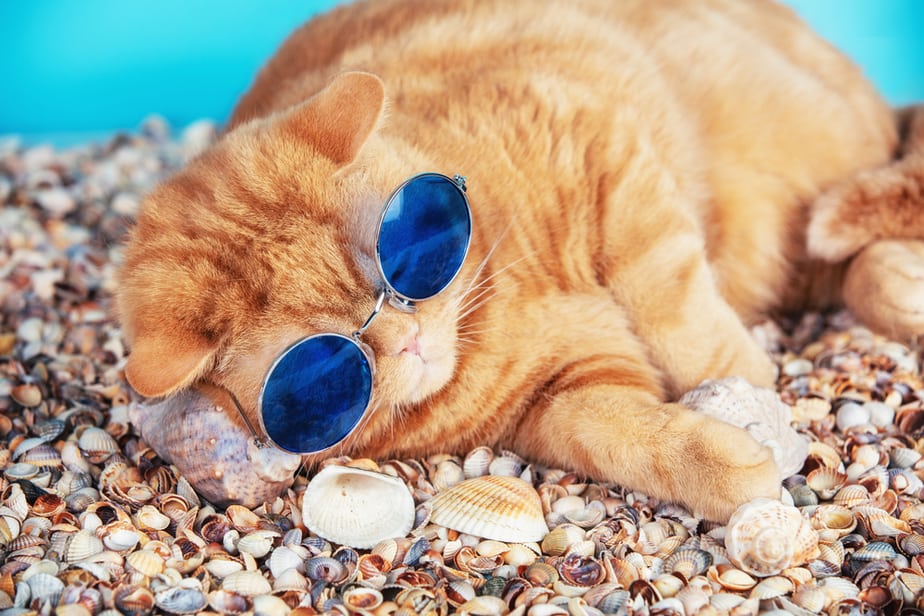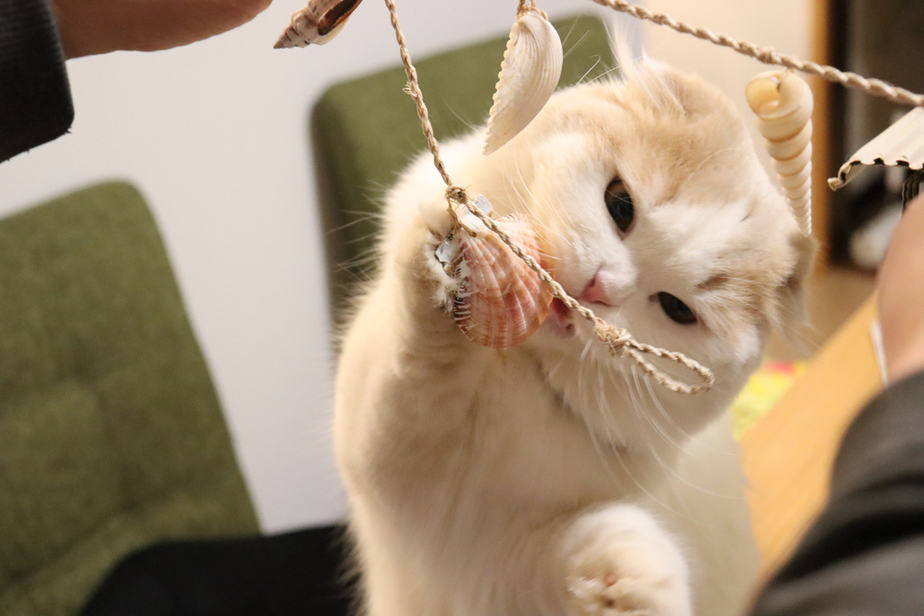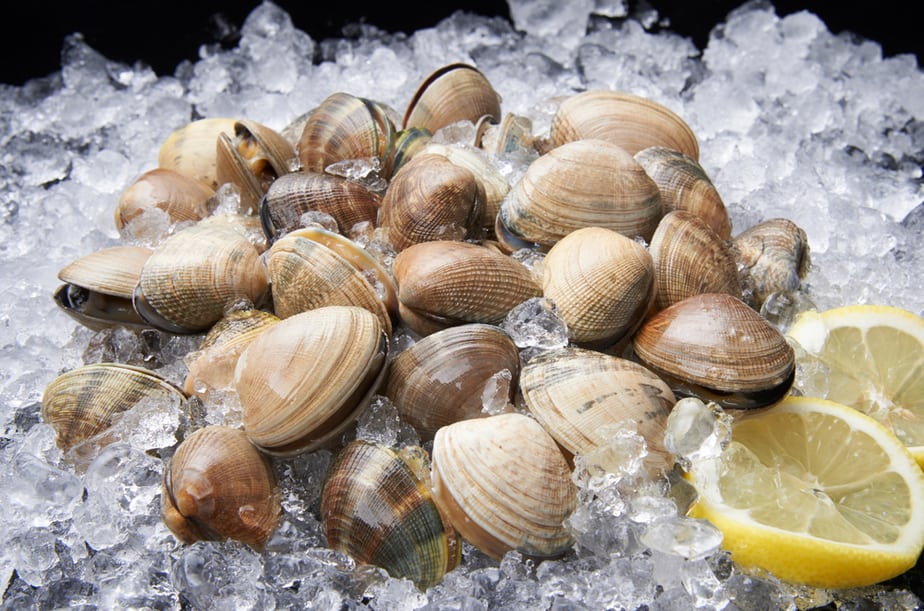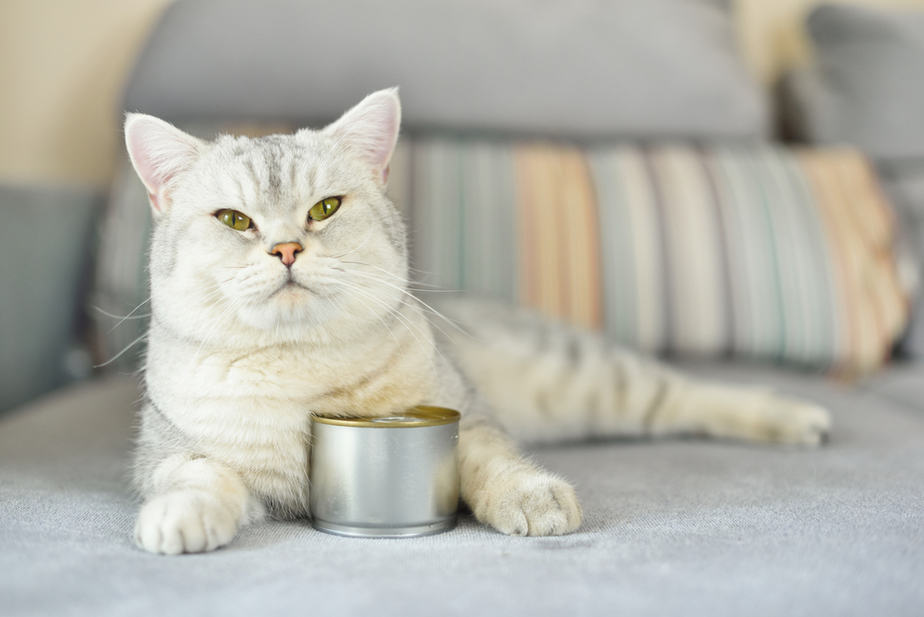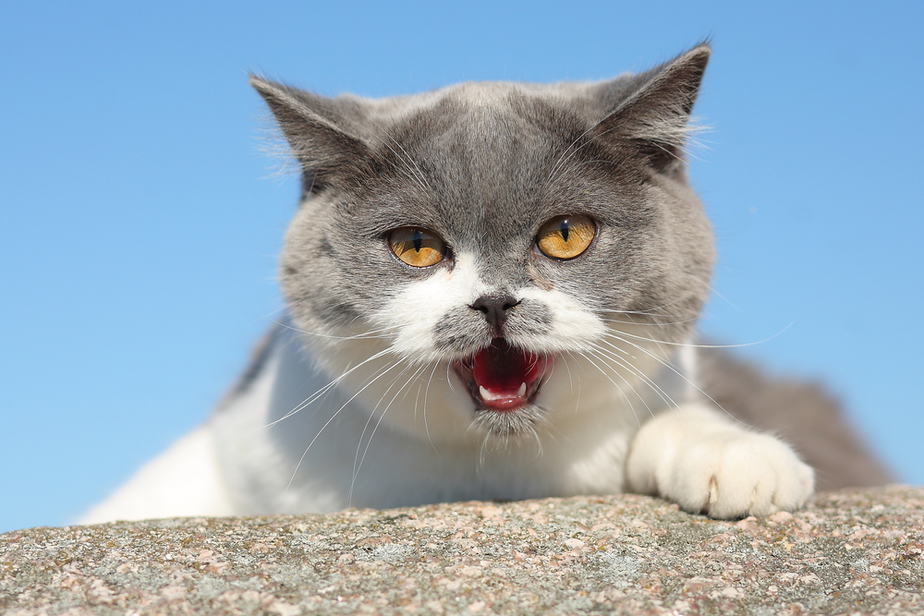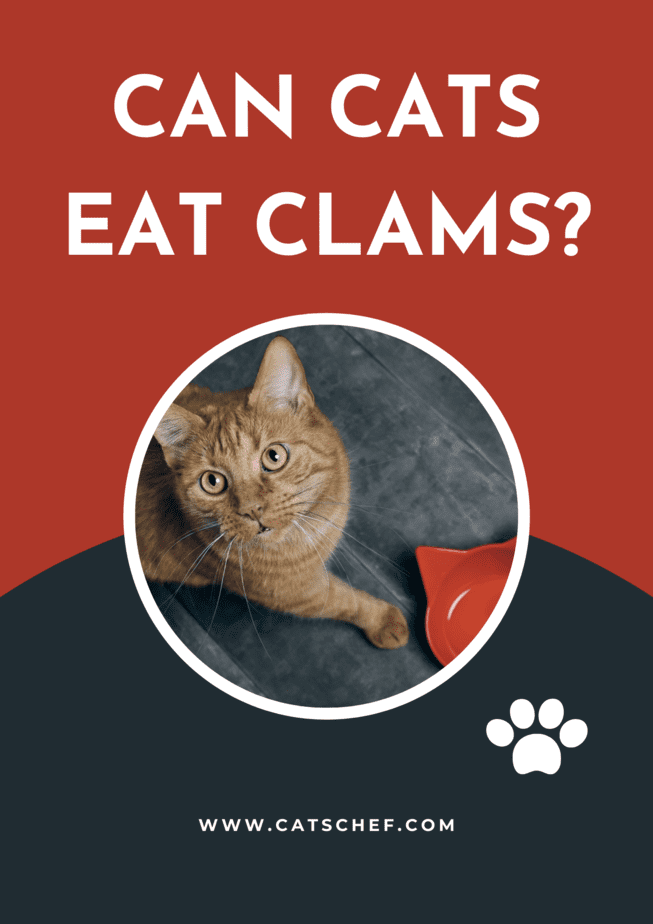📖 Table of Content:
Cats have quite a reputation for their love of marine life. Their greedy little eyes will light up just as much at the sight of fish swimming in a tank, as they will at crustaceans and mollusks on your plate. But are shelled creatures even safe for your cat? Can cats eat clams, for instance?
You’d be shocked to find out your cat may not be able to eat these lip-smacking bivalves. Everybody’s always raving about cats needing animal protein in their diet and clams definitely fall under that category. Your furry friend’s known to steal leftover clam chowder!
When it comes to cat-friendly seafood, there’s definitely a variety to choose from. Seafood is rich in protein, vitamins, and minerals, making it a great choice for an occasional treat. However, you should consult your vet beforehand as seafood is a rather common allergenic.
To cut a long story short – cats can eat clams. They are a great source of protein, omega-3 fatty acids, and a very important amino acid called taurine.
BUT, you have to be careful with clams. There are certain things you need to take into consideration before deciding to feed them to your cat.
Can cats eat clams?
In case you didn’t know, clams, oysters, and mussels aren’t the same mollusk. Luckily for you, cats can enjoy any of them occasionally without any repercussions. As long as you remove their shells and cook them properly, you shouldn’t be afraid to share them with your furry friend.
So, what are clams? Clams are marine bivalve mollusks with smooth and shiny shells.
Unlike oysters, they can live in both fresh and salt waters. Humans usually eat clams steamed or raw (quick reminder: never feed your cat raw seafood).
Clams are safe for cats as long as you make sure to cook them properly without any seasonings, onion, or garlic. They can provide your feline friend with a variety of nutritional and health benefits.
But – there’s always a but when it comes to feeding your cat anything new. You should consult with your vet, and consider any potential risks before making changes to your pet’s diet. So, let’s dive in.
Potential risks
Clams are safe for cats – unless your ravenous rascal is allergic to them! Seafood is a very common allergenic in the feline world, so it’s wise to first chat to your vet before adding clams to your cat’s regular diet.
If your cat is having an allergic reaction to clams, she’ll most likely show signs of an upset stomach, vomiting, and diarrhea. She might also develop a skin rash and/or itchiness around the rectum, and she may display scooting behavior. If you notice any of these symptoms, take an urgent trip to the vet.
Clams can be quite difficult to digest if they’re not cooked properly. Undercooked clams can be harmful to felines, so make sure to cook them all the way through. They should be soft and tender before you feed them to your kitto.
Avoid seasonings like salt, onion, and garlic. They’re toxic to cats and can lead to food poisoning and serious digestive issues.
Your cat might show signs of cramps, vomiting, and diarrhea. If your pet accidentally eats seasoned clams, make sure to contact your vet.
Clam shells can be a choking hazard. Always deshell your mollusks before feeding them to your cat.
Shells aren’t suitable for your feline friend as they can easily lead to choking and intestinal obstruction. Smaller shell particles can also lead to digestive issues, causing cramps, vomiting, and diarrhea.
Potential benefits
Taurine is an amino sulfonic acid responsible for an array of functions in your cat’s body. It’s incredibly beneficial to her immune system, digestive tract, heart muscle function, and helps during pregnancy and fetal development. You guessed it – clams are packed with taurine!
That makes them an excellent choice of seafood for your feline. If your guzzler is a big fan of these tasty bivalves, don’t hesitate to add them to your grocery list. A couple of clams every now and then should provide her with sufficient levels of taurine.
Protein plays a major role in your cat’s body. If you’re a responsible cat parent, you are aware that cats are carnivores and they require primarily animal protein and fat to survive.
Clams are a great source of protein with 12 grams per serving size (which makes them a better option than oysters and mussels).
It goes without saying that you shouldn’t solely rely on clams for your cat’s daily protein intake. Her diet should consist of beef, turkey, and chicken (or fish), but clams could be a great healthy treat for when your cat is feeling extra picky.
Omega-3 fatty acids are super important as well. They reduce inflammation and are a great ally in fighting against diseases like arthritis, kidney disease, heart disease, or even cancer.
An occasional clammy treat can provide your cat with 241 milligrams of omega-3 fatty acids. This number is significant; however, if your cat is in desperate need of fatty acids, you might want to opt for oysters and mussels instead.
Either way, these shelled creatures can keep your precious purr machine happy and healthy. Make sure to cook them properly and give them only as an occasional snack.
Can cats eat raw clams?
“Can cats eat clams that haven’t been cooked? Is this a safe option for them?”
Never feed your cat raw clams.
They contain an enzyme called thiaminase that breaks down thiamin in your cat’s body. Thiamine is an essential B vitamin responsible for preventing different neurological issues, including incoordination and seizures.
Thiamine deficiency is a serious issue in the feline world. Most cat parents make the mistake of assuming their cat is ingesting enough thiamine through their carnivorous diet. Your cat might eat plenty of fresh meat, but she also might be ingesting antinutrients that destroy thiamine in her body.
Another thing to keep in mind: Raw clams are a breeding ground for bacteria and parasites. The only way you can get rid of harmful pathogens such as E. coli and salmonella is by exposure to high temperatures.
Raw clams could lead to dangerous bacterial infections. So, the verdict is clear – never feed your cat raw clams!
Can cats eat canned clams?
This is another hard no. Cats shouldn’t eat canned clams because they contain high levels of sodium, which can lead to sodium poisoning. Your cat might not experience any issues if she eats one or two canned clams, but it’s better to stay on the safe side.
Cats shouldn’t eat more than 41 milligrams of salt each day. Canned clams contain 95 milligrams of salt per serving size! Obviously, that number doesn’t bode well for your cat.
You can try washing them to remove some of that excess salt, but most canned clams also contain preservatives and sweeteners, which could be harmful to your cat.
With everything in mind, it’s safe to say that your feline friend should keep her paws away from canned clams. If your cat sneakily eats the entire can of clams, keep an eye out for any sodium poisoning symptoms.
Anything ranging from vomiting, diarrhea, and excessive thirst and urination, to tremors and seizures, is a reason to contact your vet.
If your cat is experiencing milder symptoms, you can try giving her water at frequent intervals, or even enlist the help of your vet to induce vomiting. Make sure to always follow your vet’s advice, or go to the emergency animal clinic if you see fit.
Can cats have clam juice?
Clam juice is safe for cats. If you’re wondering what clam juice is, it’s essentially the broth you’re left with after steaming your clams. This broth is normally used in beverages, dishes, or consumed on its own for various health benefits.
Clam juice might be a great option for keeping your precious pet hydrated. Cats are infamous for not drinking enough water throughout the day. They’re too lazy to remember, and they don’t really like the taste of water.
Clam juice is delicious, and it offers some additional health benefits. Since clams are rich in protein, taurine, and omega-3, some of those benefits leach into the broth.
Clam juice might also be a great choice for elderly cats with renal issues. It can provide them with necessary nutrients while also increasing their liquid intake. Cats with renal issues often refuse to eat and drink, so adding clam juice to their food might encourage them to eat more.
If you’re planning on giving your cat some leftover clam juice, just make sure to consult with your vet beforehand. All cats are different – what’s fine for one four-legged friend might not be for another.
Can cats eat clam chowder?
Cats love eating human food! It makes them feel included, and it satisfies their curiosity. Don’t be surprised if your greedy monster decides to join the dinner party and helps herself to some of that yummy clam chowder.
Cats can eat clam chowder, but you have to be very careful about what you put inside. Apart from clams, clam chowder is usually made with potato, bacon, and onion.
Potatoes and bacon are relatively safe for consumption and they won’t do any harm to your feline friend. On the other hand, onion is extremely toxic to cats. In addition to that, too much salt can lead to sodium poisoning.
If you’re planning on sharing some of that delicious chowder with your favorite furball, make sure to avoid onions, garlic, and other harmful seasonings or sauces. Now there’s nothing stopping your cat from enjoying that heavenly taste!
“Clam” down – cats can eat clams!
Cats are notorious for being picky about their food, but they’d hardly ever say no to some scrumptious seafood. Clams are a great way of introducing some variety to your cat’s diet. They’re delicious, nutritious, and easy to make.
Clams are packed with protein, taurine, and omega-3 fatty acids. As long as you cook them properly, avoid any seasonings, and serve them to your precious purrincess on a gold platter, you should be fine. Cats love clams!
It goes without saying, but never feed your cat raw clams or clam shells. You should also avoid canned clams, but if you have no other way of sourcing these marvelous mollusks, you can always wash them to remove some of that excess salt.
I’m sorry to say, if you’re planning on sharing some clam chowder with your favorite pet, you won’t be able to share it (not unless you prepare some for her separately without any add-ons).
Remember, don’t make any changes to your cat’s diet without prior consultation. Other than that, enjoy some quality time with your furry monster!
Read more: Can Cats Eat Crab? Is It Worth The Risk?
